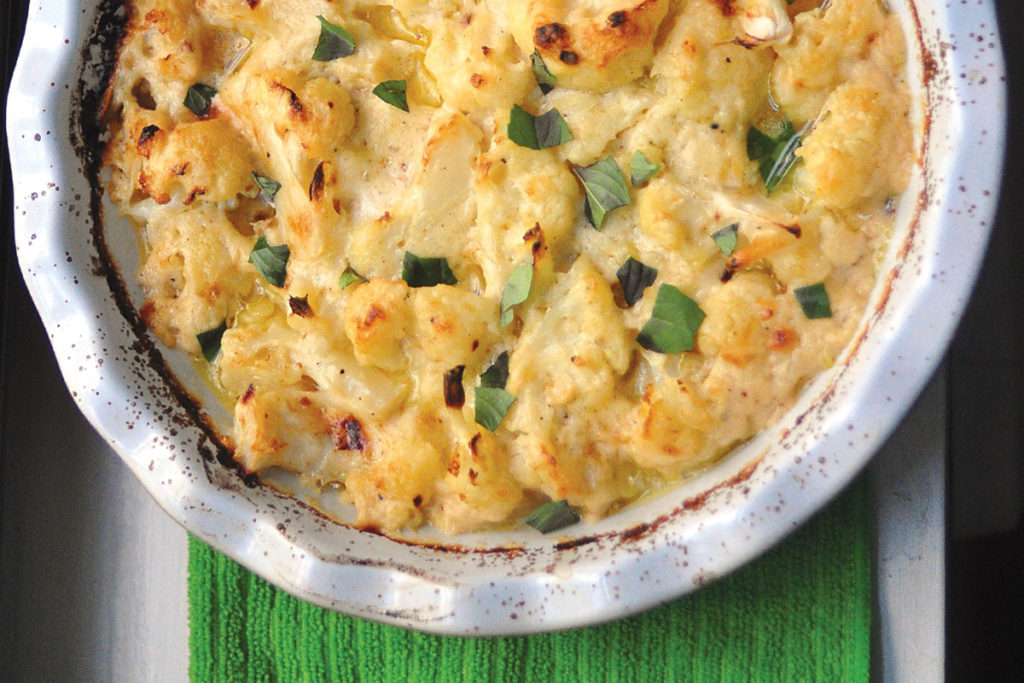Good and Cheap: How One Author Learned to Cook on $4 a Day
November 6, 2015

Could you eat on $4 per day, and still eat healthy and well? This question is a daily reality for millions of Americans who receive benefits from the Supplemental Nutrition Assistance Program (SNAP), formerly known as food stamps.
At a recent talk at San Francisco’s Book Passage, author Leanne Brown shared her experiences developing the cookbook Good and Cheap: Eat Well on $4/Day, her answer to the conundrum of how to feed oneself healthfully on the average SNAP budget.
The project started when she was working on her Master’s thesis in food studies at New York University, and she became interested in SNAP. In the United States, 46 million people (one-sixth of the population) receive benefits, a number that Brown found staggering (the entire population of her native Canada is 35 million). Even more people qualify for SNAP but are not currently enrolled.
Cooking at home is of course much cheaper and healthier than buying prepackaged foods, but it takes time and know-how. “A food stamp budget is not easy,” said Brown. “It’s barely enough. Cooking adds value to food. In America, it’s amazing how cheap basic foods are. It’s the effort, know-how, and creativity that we put into it that makes food worth so much.”
Complete with shopping tips, grocery lists, and estimated costs per recipe, the cookbook offers a primer for anyone new to cooking, and cooking on the cheap. Anything but austere, recipes include Vegetable Quiche, Broccoli Apple Salad, Spicy Pulled Pork, Avocado Milkshake, and Chocolate Zucchini Muffins.
After developing the recipes, Brown decided to make her cookbook available online. Her free e-book went viral, so she launched a wildly successful Kickstarter campaign to fund a print run, donating 33,000 copies of the book to people in need. Since then, the book has been picked up by a major publisher, and for every book sold, one copy is donated. To date, the free PDF has been downloaded over 900,000 times.
Brown’s audience ranges from students and retirees who may be cooking for themselves for the first time on just a few dollars a day, to experienced home cooks who are looking to reduce their food bills. “Food can either be a source of fear, or it can be something that nourishes you and is the one good thing in your life while you’re dealing with other things that are hard,” she said.
Brown told the story of one reader who was physically disabled and had lived with a caretaker for 10 years. The woman started living on her own for the first time with little money or knowledge of how to feed herself.
“She was totally frightened,” recalled Brown. “She had found the PDF version of the book and wrote to me the next day and said, ‘I made the Mexican street corn, and it was so delicious that I just cried. I cried because it was delicious, but also because I was so relieved to realize that I could do this, and I could enjoy this food.’ Food can have so much more meaning than ‘just food.’ It’s a relief and a deep kind of comfort.”
Brown hopes the book will empower more people by meeting them where they’re at, and providing something delicious for everyone regardless of budget. Here are a few tips from her book that every cost-conscious home cook can use:
Buy basics that can be used in multiple meals. Versatile ingredients like flour, pasta, garlic, and lemon have countless applications. Beans and rice store well, are inexpensive, and have high nutritional content.
Build a pantry. Brown recommends investing part of your budget each week in pantry items like olive oil, soy sauce, and spices, which can go a long way in adding flavor and transforming a mundane dish into something delicious.
Buy in bulk. Buying in larger quantities can bring down the price, but be careful to buy only what you’ll be able to store and finish, so that nothing goes to waste.
Buy what’s in season. When fruits and vegetables are at their peak, they are generally more abundant and cost less. Buying produce in season also increases its value because it tastes better. Conversely, “When you’re buying out of season, produce is more expensive and tastes horrible, and you’re probably not going to finish it.”
Don’t let wilted vegetables go to waste. That bunch of spinach might be looking less perky than it did when you first bought it, but don’t toss it in the compost. It may not be crisp enough for a salad, but you can remove any bit of rot and throw it into the sauté pan.
More than just a cookbook, Good and Cheap is a “strategy guide,” teaching basic techniques in down-to-earth language for anyone to adapt and use as they see fit. One of the big takeaways from the book is to be flexible and creative with the ingredients on hand, and follow your taste buds.
“I want people to learn how to make a quiche and not have to look at the recipe again,” said Brown. “I get excited when someone tells me, ‘I made this recipe from your book, but I changed this, this, and this.’ And I’m like, ‘Good! Make it your own. What you like is what matters.’”
Try Cauliflower Cheese recipe from Good and Cheap »
Learn more and download the free e-book at www.leannebrown.com.
Double your SNAP benefits for fresh fruits and vegetables at the farmers market through the Market Match program. Learn more.
Topics: Culinary, Food access, Vegetables
